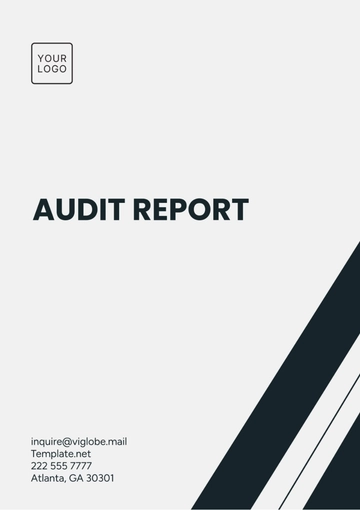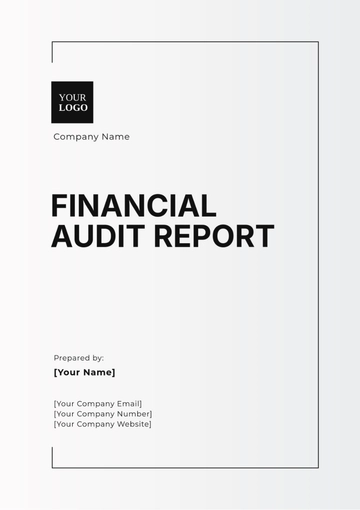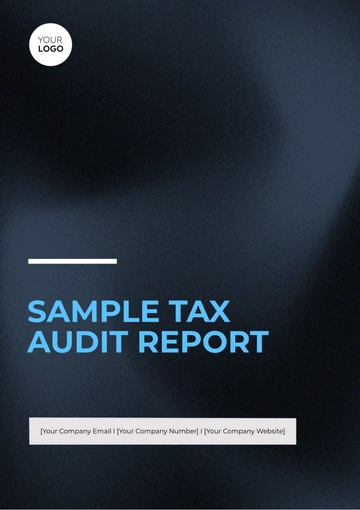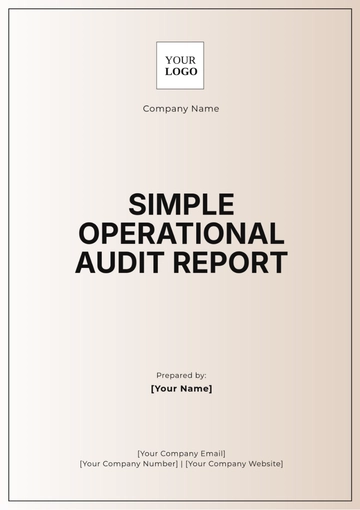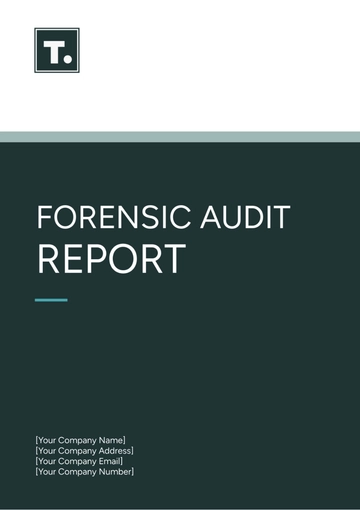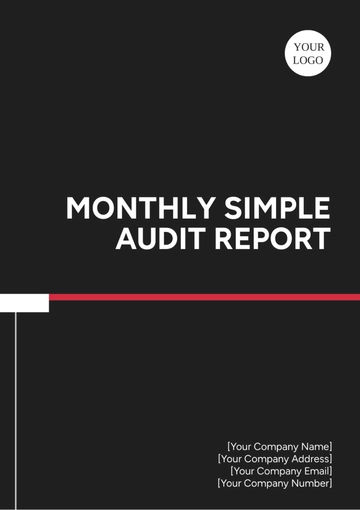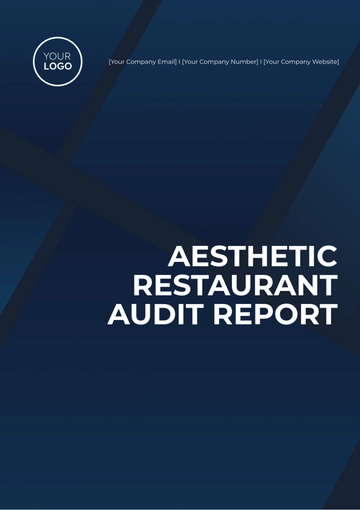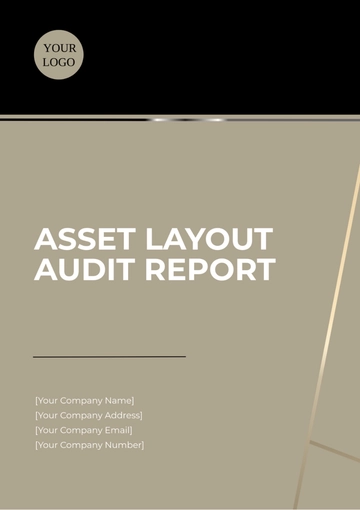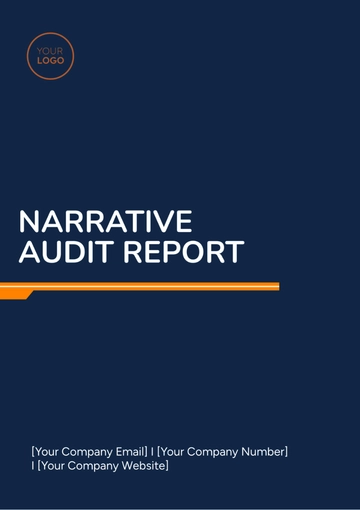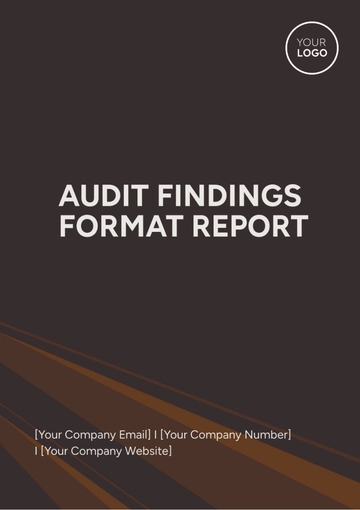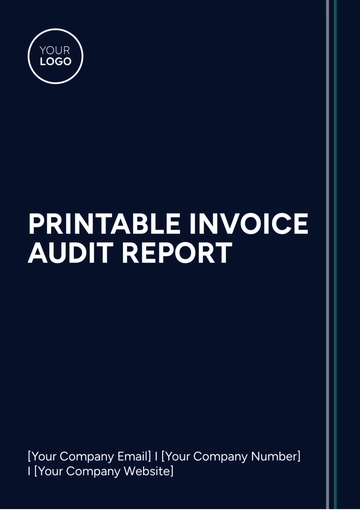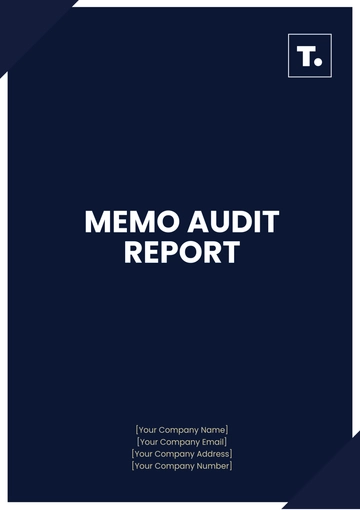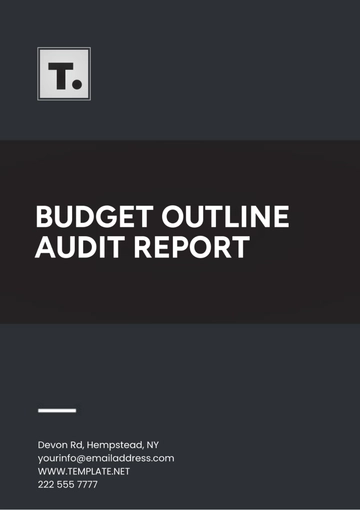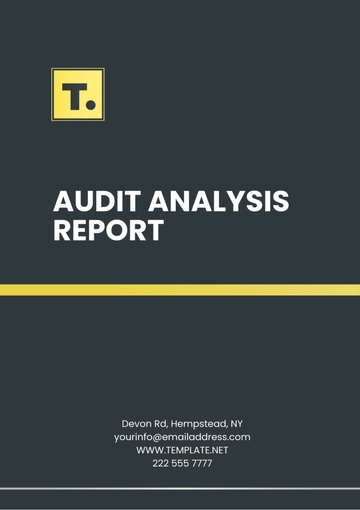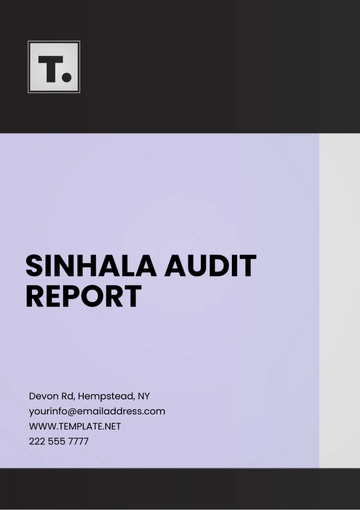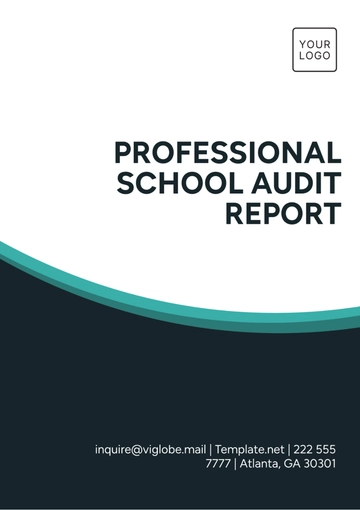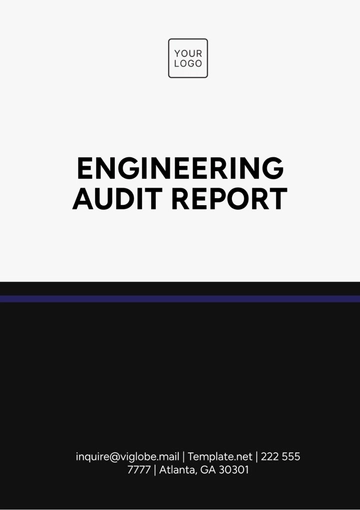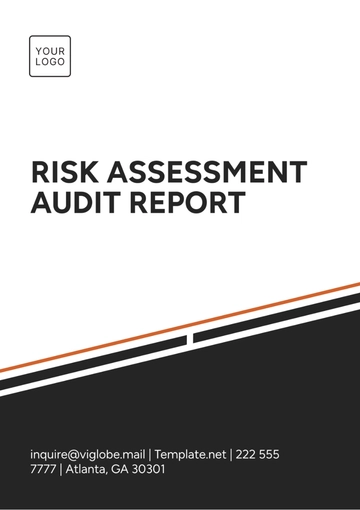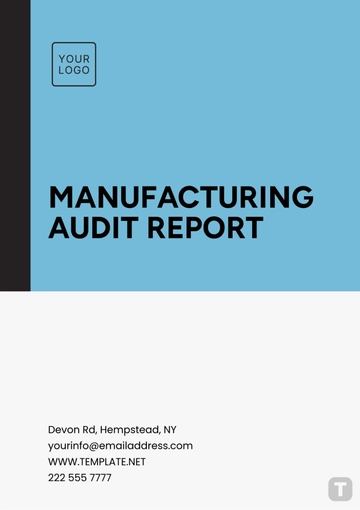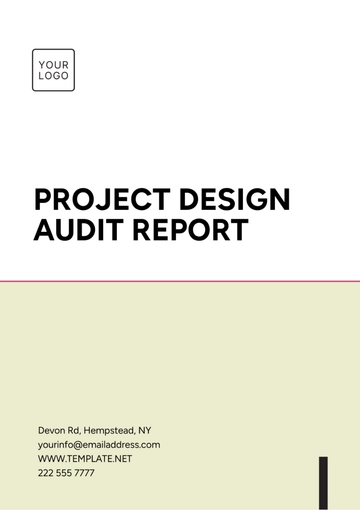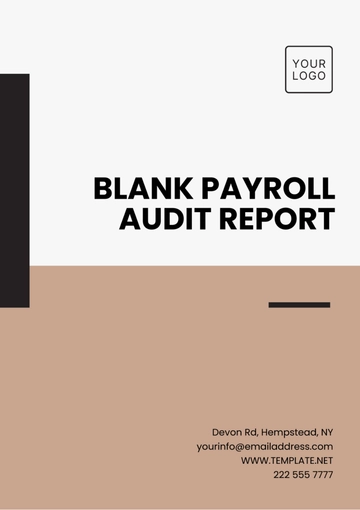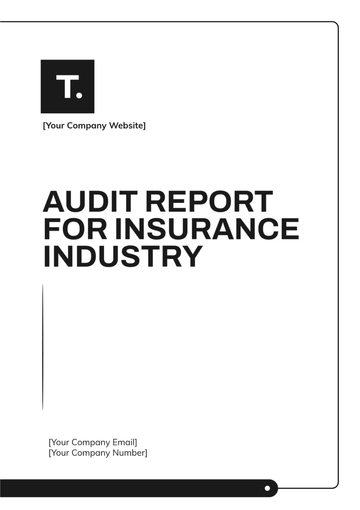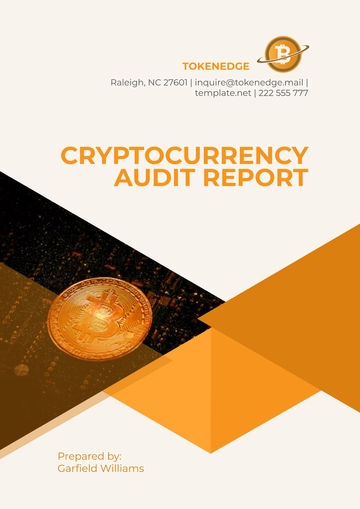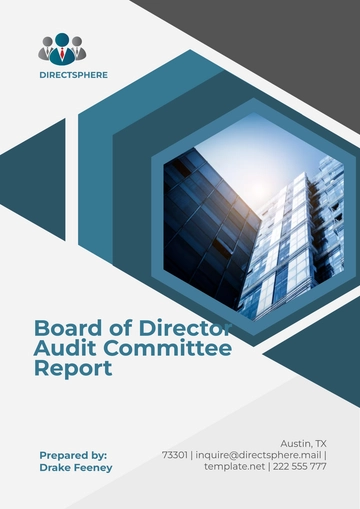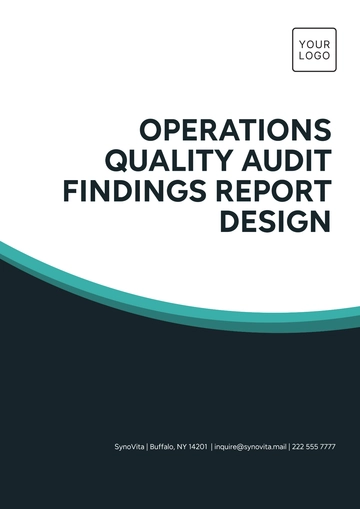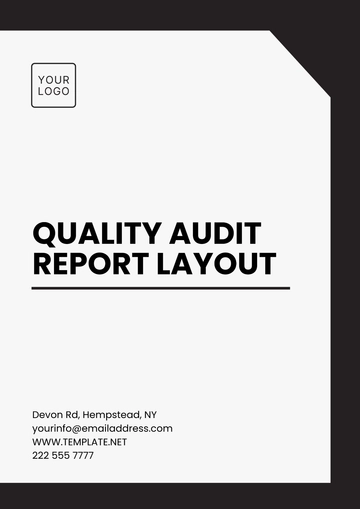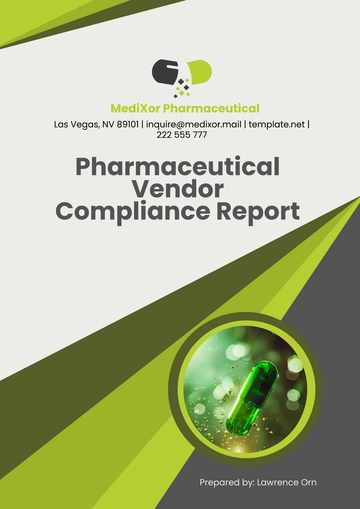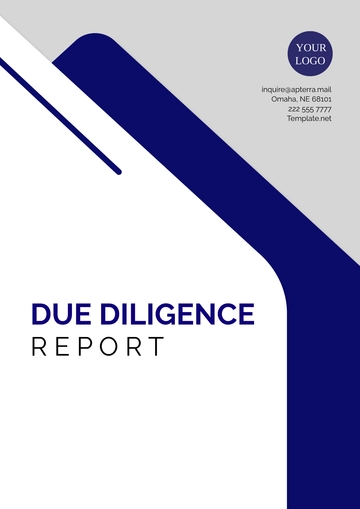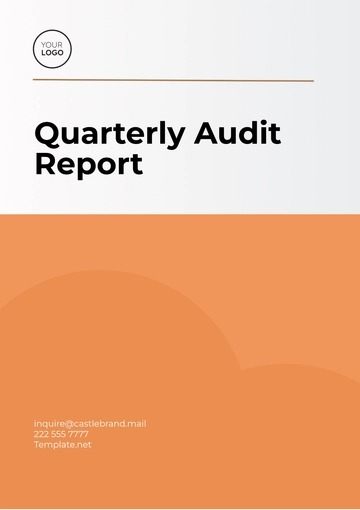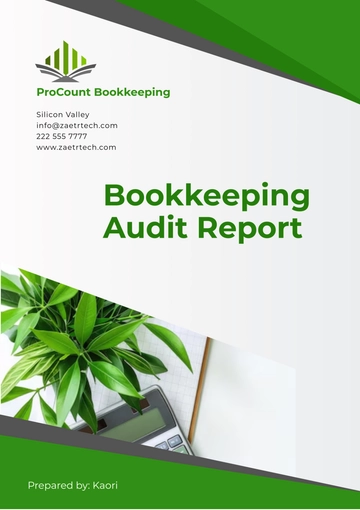Free Pharmaceutical Vendor Compliance Report
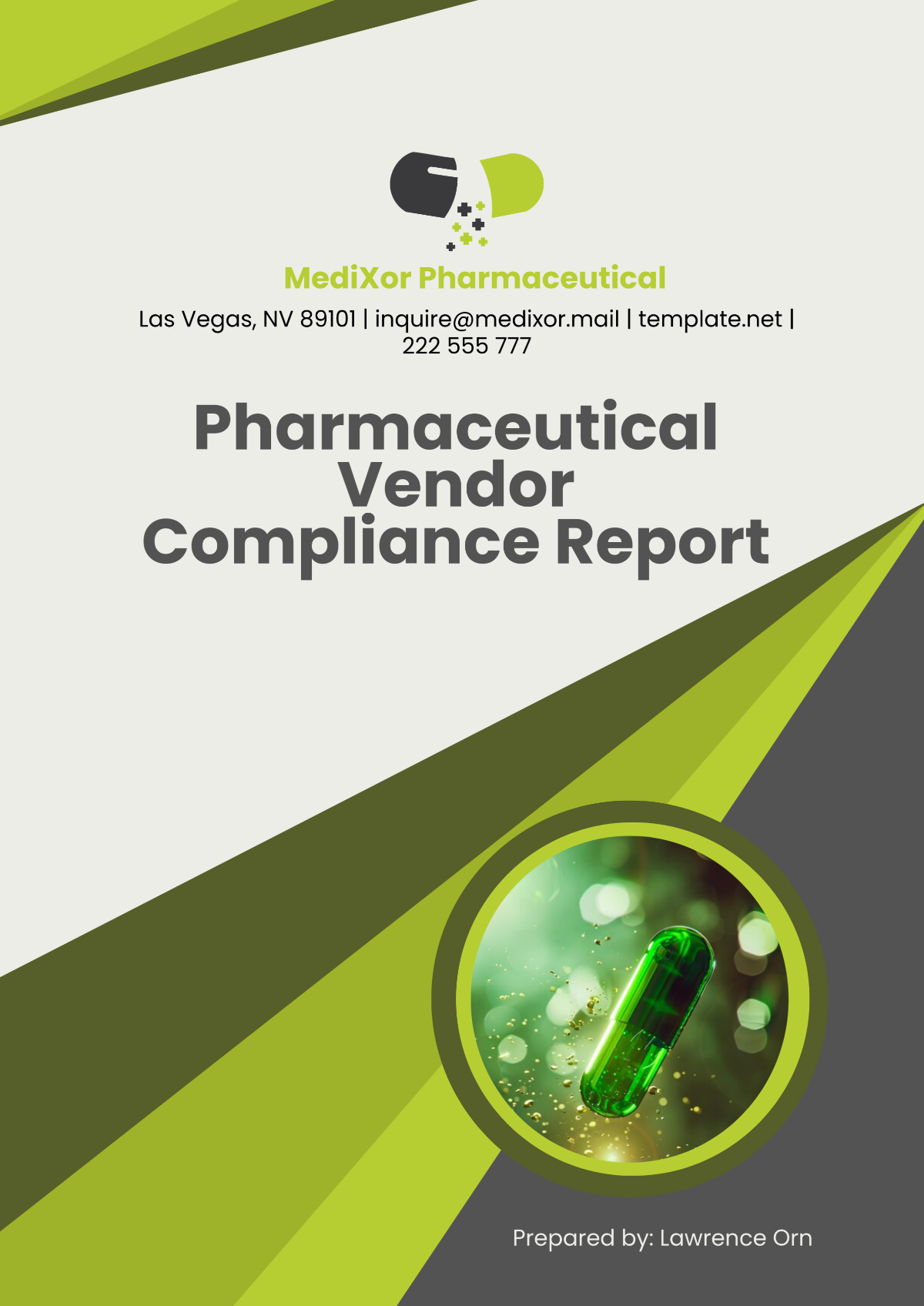
I. Introduction
A. Purpose of the Report
The Pharmaceutical Vendor Compliance Report is an in-depth evaluation of [Your Company Name]'s vendor network, focusing on the adherence to industry standards and regulatory requirements that ensure the highest level of product safety and operational efficiency. This report serves as a comprehensive document to assess vendor performance, identify non-compliance risks, and recommend actionable improvements for continuous compliance. Through this report, [Your Company Name] seeks to maintain operational excellence by promoting transparency, fostering strong vendor relationships, and ensuring regulatory compliance throughout the pharmaceutical supply chain.
Furthermore, the purpose of this report extends to ensuring that all stakeholders, from suppliers to regulatory authorities, are aligned with [Your Company Name]'s commitment to producing high-quality pharmaceutical products. The review process allows management to make informed decisions, mitigate risks, and optimize operational processes for improved patient safety, product quality, and supply chain resilience.
B. Scope of the Report
The scope of the report covers a comprehensive review of all pharmaceutical vendors working with [Your Company Name], specifically those involved in the manufacturing, distribution, and supply of raw materials, active pharmaceutical ingredients (APIs), packaging, and logistics services. The timeframe of this analysis spans from January [2050] to December [2050], ensuring that all data reflects current practices and compliance standards. The review also evaluates how well vendors align with international and local regulatory frameworks, such as FDA (U.S.), EMA (EU), and ICH guidelines, and assesses their operational and financial stability within this period.
Additionally, this report evaluates vendor performance across various parameters, including quality control, delivery timeliness, data integrity, and sustainability practices. It identifies non-compliance issues, quantifies risks, and proposes corrective actions to uphold high standards and safeguard the company's interests and reputation in the market.
C. Methodology
The findings presented in this report are based on a multi-faceted evaluation approach:
Audits and Site Visits: A combination of scheduled and surprise audits was conducted at [200] vendor facilities. These audits assess vendor compliance with regulatory requirements and [Your Company Name]'s internal standards. Audits cover all critical areas, including raw material handling, manufacturing processes, environmental controls, and record-keeping practices.
Quarterly Vendor Assessments: Vendors were evaluated on a quarterly basis to monitor their ongoing compliance performance and adherence to previously agreed-upon corrective actions. This ensures that any non-compliance issues are promptly addressed.
Data Collection and Analysis: Quantitative and qualitative data were collected from internal teams, vendor reports, and regulatory bodies. Performance data was analyzed to identify trends, assess compliance gaps, and calculate risk levels across all vendors.
Vendor Surveys and Feedback: Surveys were distributed to internal stakeholders working directly with vendors, such as procurement, quality control, and logistics teams. Feedback from these teams provided invaluable insights into vendor performance, service quality, and any recurring issues.
Industry Benchmarking: Compliance performance was benchmarked against industry standards and the best practices set by global pharmaceutical organizations. This included evaluating compliance rates for similar vendors in the industry, as well as regulatory updates that may have influenced vendor performance.
II. Regulatory Landscape
A. Key Compliance Requirements
Pharmaceutical vendors are subject to a variety of regulatory standards that ensure the safety, quality, and efficacy of products. Adherence to these requirements is vital for preventing recalls, protecting public health, and maintaining the reputation of pharmaceutical companies. Key compliance requirements include:
Good Manufacturing Practices (GMP): GMP guidelines are essential in ensuring that pharmaceutical products are produced consistently, meet predefined quality standards, and are manufactured in controlled environments. Vendors must demonstrate their adherence to these practices, including facility cleanliness, equipment maintenance, and personnel qualifications.
Good Distribution Practices (GDP): GDP governs the safe handling and distribution of pharmaceutical products throughout the supply chain, ensuring that the integrity of products is maintained from the point of manufacture to delivery to the end-user. Compliance with GDP minimizes the risk of product contamination, mislabeling, or improper storage.
Data Integrity Regulations: As pharmaceutical companies increasingly rely on electronic systems, data integrity has become a critical compliance area. Vendors must comply with regulations like FDA 21 CFR Part 11 and EU Annex 11, ensuring that all electronic records are accurate, secure, and easily auditable.
Environmental and Safety Standards: Beyond product quality, vendors must comply with environmental and safety regulations. This includes maintaining waste disposal protocols, adhering to ISO 14001 (environmental management), and ISO 45001 (workplace safety), all of which contribute to the well-being of both employees and the surrounding community.
Anti-Bribery and Anti-Corruption (ABAC) Policies: Increasing attention is being given to preventing corruption and unethical business practices. Vendors must demonstrate compliance with ABAC regulations to avoid reputational damage and legal consequences.
B. Trends in Pharmaceutical Regulations
Pharmaceutical regulations are constantly evolving to keep pace with innovations in technology, manufacturing practices, and global trade. Vendors must stay abreast of these changes to maintain compliance and mitigate associated risks. Key trends include:
Increased Scrutiny on Supply Chain Transparency: Regulatory bodies are placing more emphasis on supply chain transparency. Pharmaceutical companies are now required to ensure that all materials, from APIs to packaging components, are traceable and comply with environmental and social standards. Regulations such as the Drug Supply Chain Security Act (DSCSA) in the U.S. are driving vendors to implement more sophisticated tracking and verification mechanisms.
Digital Transformation Mandates: Digital technologies like blockchain, AI, and machine learning are increasingly being used to monitor and improve pharmaceutical supply chains. Vendors are required to adopt such technologies for data management, ensuring greater accuracy, real-time tracking, and improved efficiency in the supply chain.
Sustainability and Environmental Responsibility: Vendors are being pressured to reduce their carbon footprint and adopt sustainable practices, especially in light of the global push for climate action. In addition to complying with ISO standards, vendors are now required to demonstrate their commitment to reducing emissions and waste and promoting circular economy principles in their manufacturing processes.
Global Harmonization of Regulatory Standards: As international trade of pharmaceutical products continues to grow, regulatory agencies are working towards harmonizing standards across borders. Initiatives by organizations such as the ICH and WHO are leading to more consistent requirements for pharmaceutical manufacturers, simplifying compliance for global vendors.
III. Vendor Selection and Onboarding
A. Criteria for Vendor Evaluation
Selecting the right vendor is crucial for ensuring the quality and safety of pharmaceutical products. [Your Company Name] employs a detailed and thorough vendor evaluation process, which includes a scoring system based on [10] key parameters:
Regulatory Compliance: Vendors must demonstrate that they meet all relevant regulatory requirements, including GMP, GDP, and data integrity standards. Compliance with local, regional, and global standards is mandatory.
Quality Assurance: A strong quality management system, including documented quality procedures, inspection protocols, and testing capabilities, is a critical factor in vendor selection.
Financial Stability: Financial health is essential to assess the vendor's ability to meet long-term supply commitments and withstand potential market disruptions.
Technological Capabilities: Vendors should demonstrate a commitment to adopting modern technologies for manufacturing, quality control, and data management.
Supply Chain Resilience: Vendors must have robust supply chains, capable of maintaining continuity even in the face of disruptions such as natural disasters or political instability.
Sustainability Practices: Increasingly, vendors must align with sustainability initiatives, including waste reduction, energy efficiency, and eco-friendly packaging.
Delivery Performance: On-time delivery is critical in the pharmaceutical industry. Vendors are evaluated based on their historical performance in meeting deadlines.
Responsiveness: Vendors must be responsive to inquiries, requests for information, and changes in orders or specifications.
B. Onboarding Process
Once a vendor is selected, a comprehensive onboarding process ensures that both parties align on expectations and responsibilities. This process is divided into several stages:
Initial Screening: Vendors submit all relevant certifications, licenses, insurance details, and prior audit reports. A risk assessment is conducted to ensure they meet [Your Company Name]'s standards for quality and compliance.
Risk Assessment: This phase involves a deep dive into the vendor's financial health, compliance history, and operational risks. The goal is to identify any potential issues that could affect the vendor's ability to fulfill their obligations.
Site Audits: A thorough on-site inspection is conducted to assess the vendor's adherence to manufacturing and quality standards, their facility's safety measures, and overall production capability.
Contractual Agreement: The terms of the relationship, including penalties for non-compliance, payment schedules, and delivery expectations, are outlined in a formal contract.
Integration and Training: The vendor undergoes a training program to familiarize them with [Your Company Name]'s compliance policies, reporting systems, and quality expectations. They are also introduced to the relevant teams and systems for smooth integration into the supply chain.
IV. Compliance Monitoring and Auditing
A. Monitoring Framework
To ensure continuous compliance, [Your Company Name] has implemented a robust monitoring framework that includes both automated systems and manual oversight. This system allows for real-time tracking of vendor performance, including product quality, delivery timelines, and data integrity.
Vendor Compliance Dashboard: The dashboard provides a centralized view of all vendor performance metrics, offering insights into compliance trends and identifying any deviations from established norms. This system provides real-time alerts when a vendor's performance falls below the threshold set by [Your Company Name].
Automated Alerts: Automated alerts are configured to notify relevant stakeholders of any critical non-compliance issues, such as expired certifications or late deliveries. This ensures prompt action can be taken before an issue escalates.
B. Auditing Practices
Audits are conducted annually, or more frequently for high-risk vendors, to ensure continued adherence to regulatory standards and internal policies. The audit process follows a systematic approach:
Pre-Audit Review: Prior to the audit, all vendor-submitted documentation, including previous audit reports and certifications, is reviewed. This helps identify areas that may require more in-depth investigation during the audit.
Site Inspection: The audit team conducts a physical inspection of the vendor’s facility to assess compliance with GMP, GDP, safety protocols, and environmental practices. The team also evaluates the overall infrastructure and capacity of the facility.
Audit Scoring: Vendors are evaluated based on a scorecard system, with ratings ranging from [0-100]. Vendors who score below [70] are subject to immediate corrective actions, and their continued relationship with [Your Company Name] is reassessed.
C. Corrective Actions and Continuous Improvement
Non-compliant vendors are issued a Corrective and Preventive Action (CAPA) plan, which outlines steps to address any deficiencies identified during the audit. The CAPA plan may include the following actions:
Immediate suspension of affected batches or shipments.
Detailed root cause analysis to understand why non-compliance occurred.
Implementation of corrective measures, such as updated SOPs or new training programs.
Continuous monitoring to ensure corrective actions are successfully implemented and sustained.
V. Performance Metrics
A. Key Compliance Indicators
Performance metrics are vital in assessing the ongoing compliance of vendors and ensuring that they meet the required standards for quality, safety, and operational efficiency. The following Key Compliance Indicators (KCIs) are used to evaluate vendor performance on a regular basis:
Product Quality Compliance Rate: This indicator tracks the percentage of products delivered by the vendor that pass quality control checks. A high compliance rate indicates that the vendor consistently adheres to [Your Company Name]'s stringent quality standards and regulatory requirements.
Target: [98%] or higher compliance rate
On-Time Delivery Rate: The ability of vendors to meet agreed delivery schedules is essential for maintaining a smooth supply chain. A high on-time delivery rate ensures that the production process runs without interruptions, and patient safety is not compromised by delays in critical materials.
Target: [95%] or higher
Defect Rate: The defect rate measures the number of product defects or non-conformities identified in vendor shipments. A low defect rate is a key indicator of vendor adherence to GMP and quality control standards.
Target: [1%] or lower
Audit Compliance Rate: This metric tracks the percentage of vendors that successfully pass scheduled and surprise audits without major non-compliance issues. Vendors who consistently pass audits are considered to have robust quality and regulatory systems in place.
Target: [100%] audit compliance rate
Corrective Action Implementation Rate: This indicator measures how quickly and effectively vendors respond to corrective actions following audit findings or non-compliance incidents. A high implementation rate suggests that the vendor is committed to continuous improvement.
Target: [100%] corrective action implementation within [30] days
Supply Chain Risk Incidents: This metric tracks the number of supply chain disruptions or incidents caused by vendor non-compliance. These can include late deliveries, contamination, or breaches in product integrity. Reducing such incidents is critical for maintaining product quality and patient safety.
Target: [0] risk incidents
The above metrics are reviewed and tracked quarterly to ensure that vendors are consistently meeting performance standards. Vendors that fall below the targets for these metrics are subject to further investigation and potential corrective action plans, as outlined in earlier sections.
B. Vendor Performance Data
Performance data is compiled from various sources, including audits, vendor surveys, internal team feedback, and supplier reports. This data provides an accurate picture of vendor performance and highlights areas requiring attention. Below is an example table showing vendor performance data for the year [2050]:
Vendor Name | Product Quality Compliance Rate (%) | On-Time Delivery Rate (%) | Defect Rate (%) | Audit Compliance Rate (%) | Corrective Action Implementation Rate (%) |
|---|---|---|---|---|---|
Vendor A | 99.5% | 96% | 0.5% | 100% | 100% |
Vendor B | 97% | 92% | 2% | 98% | 85% |
Vendor C | 100% | 98% | 0.2% | 100% | 100% |
Vendor D | 95% | 90% | 3% | 95% | 90% |
Vendor E | 98% | 99% | 1.5% | 100% | 100% |
This table demonstrates how each vendor's performance compares to the set targets. Vendors with higher compliance and performance metrics are prioritized for continued business, while those with persistent issues (such as Vendor B and Vendor D) may face closer scrutiny and corrective actions.
VI. Risk Assessment
A. Risk Identification
Risk identification is a critical aspect of maintaining a compliant and efficient vendor network. Potential risks can arise from various areas within the supply chain, including production delays, quality control failures, regulatory non-compliance, and external factors like geopolitical instability. Common risks identified in the vendor compliance process include:
Regulatory Risk: The risk that vendors fail to meet the latest regulatory standards or fail an audit due to non-compliance with GMP, GDP, or data integrity standards. Regulatory changes can be difficult to track, and vendors who are slow to adapt may pose a risk to [Your Company Name]'s compliance status.
Supply Chain Disruptions: Natural disasters, geopolitical tensions, or pandemics can disrupt vendor operations, leading to delays in material supply or product delivery. Identifying vendors that are vulnerable to such disruptions is crucial to ensure continuity in production and minimize risks to patient safety.
Financial Stability Risk: A vendor's financial instability can lead to disruptions in their ability to fulfill contracts, delay deliveries, or compromise quality. Financial issues may also arise from bankruptcy or economic downturns, making it essential to assess the financial health of vendors regularly.
Reputational Risk: A vendor’s involvement in a scandal or publicized non-compliance issue can tarnish [Your Company Name]'s reputation. For instance, vendors involved in environmental violations, corruption scandals, or product recalls can negatively affect the public perception of [Your Company Name]'s commitment to quality and safety.
Technological Risk: As the pharmaceutical industry adopts new technologies, vendors that fail to implement cutting-edge systems for production or data management could cause operational inefficiencies or create vulnerabilities in data security.
B. Risk Mitigation Strategies
To reduce the impact of identified risks, [Your Company Name] employs a range of proactive risk mitigation strategies, including:
Vendor Diversification: To mitigate supply chain risks, [Your Company Name] works with multiple vendors across different regions. This diversification strategy helps ensure continuity of supply in case of unforeseen disruptions in one geographic area.
Financial Audits and Stress Testing: Vendors undergo financial audits and stress testing to assess their ability to withstand economic downturns, sudden increases in demand, or disruptions in the market. Regular financial health checks ensure that only financially stable vendors remain in the supply chain.
Regular Training and Updates: Vendors are required to participate in continuous education programs regarding the latest regulatory changes, compliance updates, and quality standards. Training sessions are held quarterly to ensure vendors are fully informed of changes in legislation and best practices.
Enhanced Data Security Protocols: Vendors are required to implement stringent cybersecurity protocols to protect sensitive data, such as product formulas and patient information. By regularly auditing data security practices, [Your Company Name] mitigates the risk of data breaches.
Contingency Planning: [Your Company Name] and its vendors work together to create detailed contingency plans to manage unforeseen disruptions. This includes backup suppliers for critical materials, emergency response teams, and clear communication protocols to manage any issues that arise swiftly.
VII. Conclusion and Recommendations
The Pharmaceutical Vendor Compliance Report for the year [2050] has provided a comprehensive overview of [Your Company Name]'s vendor network, identifying both strengths and areas requiring attention. Through this report, [Your Company Name] has gained critical insights into its vendor relationships, the efficacy of compliance monitoring systems, and the level of risk exposure in the supply chain.
Key Findings
A majority of vendors are performing at a high level of compliance, with [80%] of vendors meeting or exceeding targets for product quality, on-time delivery, and audit compliance.
Several vendors, including Vendor B and Vendor D, have shown consistent performance issues in areas such as delivery timeliness and defect rates, warranting further investigation and corrective action.
Supply chain risks, such as geopolitical instability and vendor financial stability, remain a concern, particularly for vendors in regions vulnerable to disruption.
Recommendations
Strengthen Vendor Monitoring Systems: Enhance the vendor compliance monitoring system by incorporating advanced technologies, such as AI and machine learning, to predict compliance issues and supply chain disruptions before they occur.
Improve Vendor Performance Management: Establish a more structured approach for managing underperforming vendors, including creating performance improvement plans and setting clear deadlines for corrective actions.
Expand Vendor Training Programs: Increase the frequency and depth of training programs for vendors, especially in the areas of regulatory compliance and data integrity, to ensure they remain aligned with industry standards.
Increase Financial Risk Assessments: Conduct more frequent financial assessments of key vendors to ensure that they remain financially stable and capable of meeting [Your Company Name]'s supply chain needs.
Through these recommendations, [Your Company Name] will strengthen its vendor relationships, mitigate risks, and ensure continued compliance with pharmaceutical industry standards, ultimately safeguarding the quality of products and the safety of patients.
- 100% Customizable, free editor
- Access 1 Million+ Templates, photo’s & graphics
- Download or share as a template
- Click and replace photos, graphics, text, backgrounds
- Resize, crop, AI write & more
- Access advanced editor
Monitor and document vendor adherence to industry standards with the Pharmaceutical Vendor Compliance Report Template from Template.net. This editable and customizable template simplifies compliance tracking. Personalize it using the AI Editor Tool for your reporting needs.
You may also like
- Sales Report
- Daily Report
- Project Report
- Business Report
- Weekly Report
- Incident Report
- Annual Report
- Report Layout
- Report Design
- Progress Report
- Marketing Report
- Company Report
- Monthly Report
- Audit Report
- Status Report
- School Report
- Reports Hr
- Management Report
- Project Status Report
- Handover Report
- Health And Safety Report
- Restaurant Report
- Construction Report
- Research Report
- Evaluation Report
- Investigation Report
- Employee Report
- Advertising Report
- Weekly Status Report
- Project Management Report
- Finance Report
- Service Report
- Technical Report
- Meeting Report
- Quarterly Report
- Inspection Report
- Medical Report
- Test Report
- Summary Report
- Inventory Report
- Valuation Report
- Operations Report
- Payroll Report
- Training Report
- Job Report
- Case Report
- Performance Report
- Board Report
- Internal Audit Report
- Student Report
- Monthly Management Report
- Small Business Report
- Accident Report
- Call Center Report
- Activity Report
- IT and Software Report
- Internship Report
- Visit Report
- Product Report
- Book Report
- Property Report
- Recruitment Report
- University Report
- Event Report
- SEO Report
- Conference Report
- Narrative Report
- Nursing Home Report
- Preschool Report
- Call Report
- Customer Report
- Employee Incident Report
- Accomplishment Report
- Social Media Report
- Work From Home Report
- Security Report
- Damage Report
- Quality Report
- Internal Report
- Nurse Report
- Real Estate Report
- Hotel Report
- Equipment Report
- Credit Report
- Field Report
- Non Profit Report
- Maintenance Report
- News Report
- Survey Report
- Executive Report
- Law Firm Report
- Advertising Agency Report
- Interior Design Report
- Travel Agency Report
- Stock Report
- Salon Report
- Bug Report
- Workplace Report
- Action Report
- Investor Report
- Cleaning Services Report
- Consulting Report
- Freelancer Report
- Site Visit Report
- Trip Report
- Classroom Observation Report
- Vehicle Report
- Final Report
- Software Report
